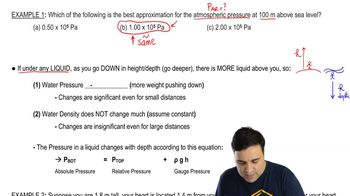Intravenous transfusions are often made under gravity, as shown in Fig. 13–59. Assuming the fluid has a density of 1.00 g/cm3, at what height h should the bottle be placed so the liquid pressure is 52 mm-Hg?
<IMAGE>
 Verified step by step guidance
Verified step by step guidance Verified video answer for a similar problem:
Verified video answer for a similar problem:



 17:4m
17:4mMaster Pressure and Atmospheric Pressure with a bite sized video explanation from Patrick
Start learning